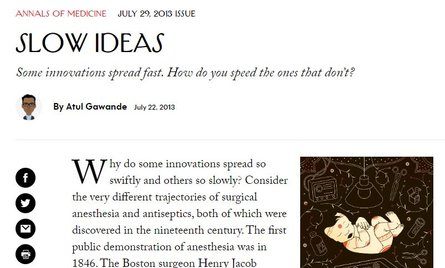
Why do some innovations spread so swiftly and others so slowly? Consider the very different trajectories of surgical anesthesia and antiseptics, both of which were discovered in the nineteenth century. The first public demonstration of anesthesia was in 1846. The Boston surgeon Henry Jacob Bigelow was approached by a local dentist named William Morton, who insisted that he had found a gas that could render patients insensible to the pain of surgery. That was a dramatic claim. In those days, even a minor tooth extraction was excruciating. Without effective pain control, surgeons learned to work with slashing speed. Attendants pinned patients down as they screamed and thrashed, until they fainted from the agony. Nothing ever tried had made much difference. Nonetheless, Bigelow agreed to let Morton demonstrate his claim.
